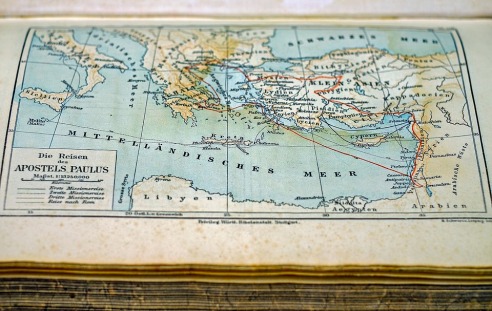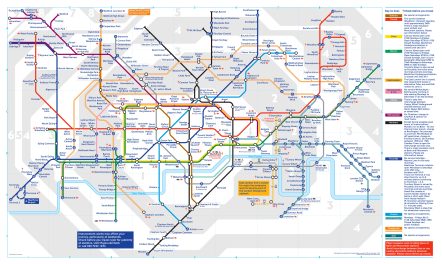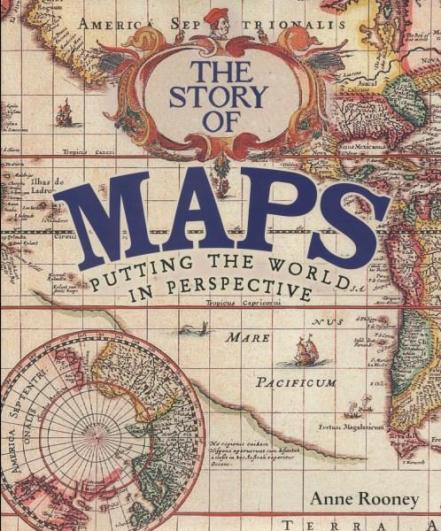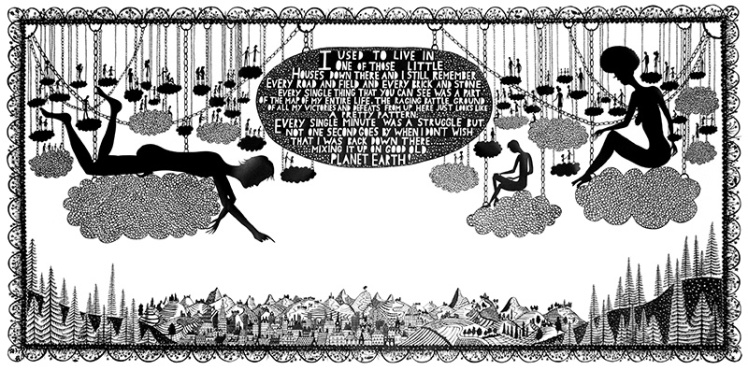
My daughter is sick at home, recovering from a nasty chesty cold. As a result, I’m (willingly – within reason) at her beck and call. But I’m still seeing if I can get some of what I wanted to do done today, in those moments when I get a brief respite. And this includes sharing my passion for maps, and why they are so significant. And I’m going to see if I can then link this back to my first sentence (let’s see how I go!)
My love of maps
I’ve grown up loving maps. Probably because my Dad was a geography / politics teacher, and also loved them. We had a massive Melway map of Melbourne covering one wall (conveniently, the wall where the telephone was found – ideal for planning our social commitments in the days before mobile phones – or even, for a while, cordless phones).
The shelves in Dad’s study carried a range of atlases. Because, of course, different maps were needed for different locations, looking at places from different scales or perspectives – political (based on defined legislated regions), geological or ecological maps, historical maps showing the cultural changes over time depending what we might need to look up). And maps date. So you need a lot. It’s probably reason #873 that I became interested in town planning. Anyway …
The role of maps
As well as the practicality of having a map you can rely on to help guide you from A to B, maps have influence in ways we often don’t think about. Some of these include how:
- They help to frame our thinking about the world, the city, the neighbourhood – the places – we live in.
- If we prepare one ourselves – a mud map, if you like, or a more detailed one – we crystallise the places around us into a simplified and manageable understanding of the world. We zoom in on what’s important to us, leaving out the superfluous. At the same time, we run the risk of overlooking something that might seem insignificant but could prove important.
- By recognising of who produced the map we look at – and from what perspective and purpose – we can better understand our perspective of how we might put this map to us. For instance:
- What’s been included?
What’s left out?
What’s central within the map, and what is on the periphery? Because, of course, there is no logical reason to have the north pole on the top of the map (as just one example), except that was the convention in Europe, when map making and sharing started becoming more prevalent. - How maps change over time, as boundaries change, cities expand, landuses change, countries claim more land (for instance, in the north sea) or lose it (say, due to flooding, or rising sea levels).
- In extreme cases, they might even show ‘paper towns’ where things do or don’t exist in part due to cartographic decisions (and an influence on John Green chosing ‘Paper towns’ as the title for one of his Young Adult’s novel
- How does the continuous nature of online maps change our view, compared with hard copy maps, where places are on the edge?
- What’s been included?
- The way we use our own mental maps – our landmarks, if you like – to understand our own surrounds. And how it can be disruptive if those landmarks change.
The importance of maps, relationships and connections
At their core, maps are really a way of showing the connections between two or more relationships.
Although I’ve focused on geographic maps, maps can of course be about different things.
They can map out relationships between places, relative differences in places (ie. geological or vegetation maps, for instance)
They might not be drawn to scale, of course. One of the most well known examples is the London Underground Tube map, which is schematic rather than to scale. Having been produced so beautifully, it has become iconic in its own right.
They might have no relationship to place at all. For instance, process maps or mind mapping help to make sense of the connection, and the progression, between ideas or steps in a process. Family trees can help to identify relationships between people. And so on.

The beauty of maps
One aspect that can be forgotten is how beautiful maps can be. I was reminded of this when picking up a copy of The Story of Maps: Putting the World into Perspective in my local book shop.

Maps can be beautiful, and stunning records of bygone times. And that is – in part – because connection and relationships between things and people, can be beautiful (and the map creators want to express that).
Mapping my life
But finally, I wanted to bring attention to this idea of mapping as a way to understand ourselves. And what better way than to show you this image from I saw courtesy of instagram (because it’s on display just out of Glasgow, so a little far for me to travel!)

Source: The Map of My Entire Life: Rob Ryan Studios
This beautiful image is made from handcut paper, and the text reads:
‘I used to live in one of those little houses down there and I still remember every road and field and every brick and stone. Every single thing that you can see was a part of the map of my entire life. The raging battle ground of all my victories and defeats from up here just looks like a pretty pattern. Every single minute was a struggle but not one second goes by when I don’t wish that I was back down there….. Mixing it up on good old planet earth!’
And that brings me back (again) to the most important aspect of maps. They provide us with a frame of reference, and a way of making sense of what has happened (or might happen). They reinforce importance of relationships and connections.
Relationships and connections are key, as I wrote about in my last post about my grandmother (link here).
And they are most important in my life now – including today.
So I am off to spend some time, lying on the couch and cuddling my little girl. Creating a bit more of the Map of my Own Life, I think!
Do you share my fascination with maps – and in what way? Please share 🙂
If you do, here are a few more sources you could look into:
- The Atlantic’s article 12 Maps that Changed the World
- This Planizen article explains the app The True Size Of – how we’ve developed a false idea of the relative size of countries, for instance, due to the challenges of mapping a three dimension form on a two dimensional page. Who knew Greenland was so much smaller?
- The role of different forms of maps and plans in shaping the form of our cities in CityLab’s The Evolution of Urban Planning in 10 diagrams
- A Next City article, which points to the importance of involvement in outcomes: In your Neighbourhood, who draws the maps?
I loved reading this and had never really thought “maps” through. What a wonderful idea to have a map of the world right next to your telephone. Thanks for the illumination.
LikeLike
Thanks Dani (and not the world map, but the Melbourne map – so handy for working out where to meet up). Maps are really fascinating (in my opinion) – glad you found this interesting too 🙂
LikeLike
My husband is a map lover. Loves scouring old editions of the Melways and vintage city and world maps. They’re always ‘fascinating!’
LikeLike
I’m with your husband (I find the changes over time so interesting – and other countries / cities are even more fascinating because they often document this over so many years). Love to pour over them!
LikeLiked by 1 person
I love getting out the maps to plan road trips. It is so much better looking at them in paper.
LikeLike
I love the whole texture aspect of maps too, so totally agree!
LikeLike
Great article, I too have a fascination with maps ! I just love maps, especially ones of my favourite places and cities. I keep all maps from my travels and craft with them. I have, map chairs, suitcase, lamps and table mats just to name a few. I think my next map project is going to involve all the piste maps I’ve collected over the years !
LikeLike
Actually – you do, don’t you? That’s reminded me to ask my parents to keep the maps they will (inevitably) collect on their trip to Canada (they leave in a couple of weeks, and I’d love to do some of the things you have on your post with their maps – as a Christmas gift for them or something) x
LikeLike
My Mum was a map enthusiast. She used to go to a map shop near Chadstone. Have you been (near the corner of Warragul Rd and High Street Rd). You should think about going there if you haven’t been. She used to love it. I love maps too, more for their aesthetic than anything, but my sense of direction is terrible (my 9 year old is a better navigator than me) so I should probably look at their functional value also!
LikeLike
Is that the Melbourne Map Centre on Waverley Road (just off Warrigal Rd?) No – never been there (I had to look it up) but it sounds as though it’s somewhere I should go (close to home, too!) My sense of direction is usually ok, but can sometimes go haywire – I love the security of a map for that reason, too! (still haven’t quite adapted to GPS)
LikeLike
Yes, you are right. Waverley Rd, not High St Rd. Yes, thank goodness for road maps (if you can read them) I usually hold mine upside down. My husband does the double check before I start giving him directions from the Melways. 😂(Tortured man!)
LikeLiked by 1 person
I love maps too. We have them pinned here and there, generally ones from travels with running routes scrawled on. I particularly like historical maps though. I totally get it! Such a great post x
LikeLiked by 1 person
Of course – because you’re a runner! Looking at those would bring back memories (I am yet to love running enough to want to keep any maps – maybe one day (I’m still feeling a bit flat from my last ‘fun run’ running attempt, which I’m actually writing up now) ) x
LikeLiked by 1 person
Oh well I’m looking forward to reading that. Running is flux and flow. Some runs are the worst and some runs are ahhhhhmazing. Its the consistency that works it all out for you xxxxxxx
LikeLike
That’s the thing I need to work on – once I decide to get back into it, I’m hoping I’ll get there! xxx
LikeLiked by 1 person
This is lovely. I’ve been getting into maps more now that my daughter is old enough to understand that she lives in one country and her grandmothers and family live in other countries. It’s a tough concept to explain to a little one, but maps are a great starting place, and always turn into discussions about all sorts of places.
LikeLike
Good point – maps can be great conversation starters. We’ve had wide ranging discussions with our kids relating to maps, too. I hope you manage to see your family from time to time? – that must be tricky x
LikeLike
I love maps, love them! My neighbours when we were kids had a map all over their living room walls. I can’t bear just relying on the GPS to find places, I like to look on the map and see where we are going. My friend in the UK introduced me to the work of Rob Ryan, his paper cuts are amazing. Great post!
LikeLike
Thank you, Claire! My parents are going on a holiday in a couple of weeks, and will be printing off enlarged maps of the different areas of Canada they are visiting – I suspect they will be living a very similar experience to what you had with your neighbours, at least for a couple of months!
LikeLike
Its great to read a tale from a fellow cartophile!
Maps have always fascinated me too – such complexity conveyed so it reads so simply! Just lines and symols juxtoposed to reveal the all important relationship ~
And so lovely to see so many map lovers in the comments too 😀
LikeLike
There are a lot, aren’t there? So good to see!
LikeLike
great article
LikeLike
Thank you!
LikeLike